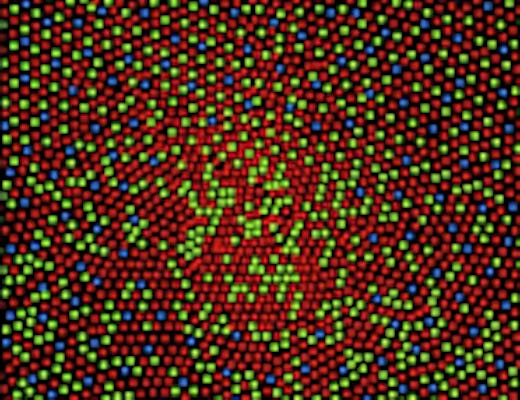How is Objective Color Measurement Achieved?
To be able to describe the human color perception and to create specific colors in a predictable way, researchers developed the field of colorimetry, the science of objective color measurement.
In colorimetry, colors are measured as precisely as possible using color measurement value systems. Analytical color measurement techniques are typical in commerce, industry, and research, and are commonly applied to non-emissive applications including paints, plastics, textiles, and food as well as emissive applications such as displays, lighting and analysis.
The application and need for colorimetry has expanded together with the rise of global manufacturing. For instance, decorative trim for a vehicle fabricated in China must match a paint applied on the vehicle rolling off the assembly line in Detroit. The same holds for mass produced displays showing exactly the same color gamut.
Because human color perception is subjective due to differences from person to person and influences such as ambient lighting as well as cultural differences, mass produced artefacts cannot easily be measured by humans. For such large scale objective measurement applications, color measurement instruments offer a standardized means of assuring consistency and repeatability and can be applied all over the world.
Colorimetry vs. Spectrophotometry
In colorimetry, color measurement is founded on the three-part theory of color vision, which says the human eye has receptors for three primary colors red, green and blue, and all visible colors are combinations of these primary colors. In colorimetry, these red, green and blue component parts are roughly represented by XYZ values respectively. Colorimeters based on XYZ measurement principle are in fact capable of measuring color just like the human eye and also known as tri-stimulus colorimeters.
Spectrophotometry, conversely, is a related but different field of color measurement that is based on many more sensors that divide a beam of light into its component wavelengths. Spectrophotometers assess the light output at each wavelength on the visible spectrum. In contrast to colorimetry, spectrophotometry offers a higher degree of precision and is typically used in study and color formulation applications.

How a Colorimeter Functions
A colorimeter used for measuring emissive artefacts like displays, consists of multiple elements to closely match the human eye as defined by CIE. First of all optics are important to define the viewing angle. An optical path including one or more optical filters are used in combination with photo diodes to closely match the individual spectral responses of the X, Y and Z functions. Electronics and processing power are also an important part in communicating the right values to computers or systems for display adjustment.
While tri-stimulus values are helpful for defining colors, they do not facilitate a simple visualization of color. Thus, a number of mathematical models and graphing techniques called color spaces are used to more closely convey the relative qualities of color like darkness, saturation, and hue.
Modern Colorimeters for Production Environments
Admesy offers a range of tri-stimulus colorimeters suitable for in-line color measurement. The Prometheus series colorimeter from Admesy offers superior filter characteristics compared to other colorimeters and ultra-high sensitivity. The Prometheus Series is typically found inline in display production facilities or adjacent R&D departments to handle white point adjustment, uniformity, flicker, reaction time and quality control.

